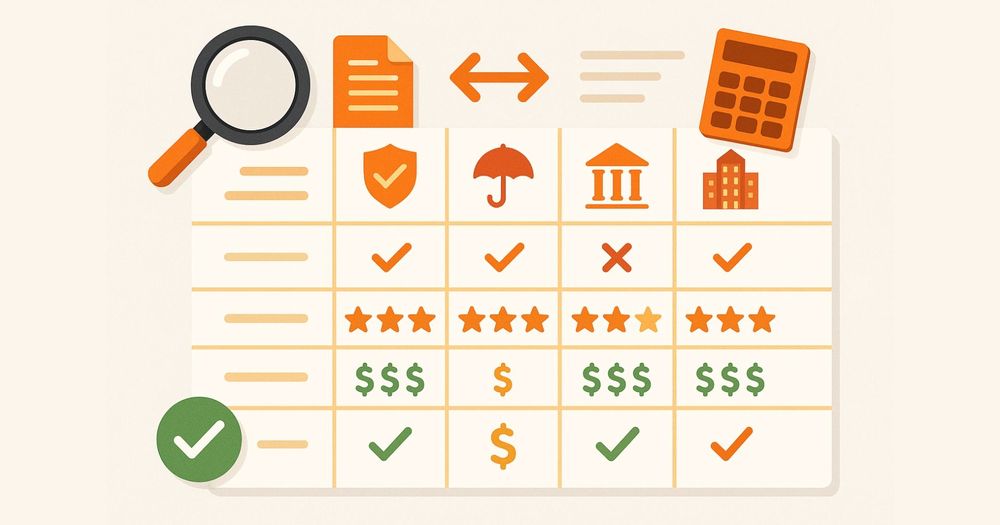Insurance prices have surged ahead of almost every other household bill. Average auto premiums now sit above $2,300, and home insurance is expected to rise another 8% before 2026 (according to industry projections from Insurify).
Comparison shopping remains one of the most effective ways to push back, yet many consumers still wonder whether online quote engines are reliable—or just slick front-ends for data harvesting.
Among these platforms, Insurify has emerged as the most widely known and arguably most reputable insurance comparison tool in the U.S. Still, the most-searched question remains: Is Insurify legit?
Before answering that, it’s worth exploring what actually powers Insurify under the hood—especially given the platform’s claim to deliver real-time quotes across 400+ insurance companies. Here’s a brief look at the infrastructure that enables it.
How Insurify Delivers Real-Time Insurance Quotes at Scale
Insurify operates as an API-first platform. Its system is built on direct integrations with over 400 carriers, many of which are major national brands and regional insurers that have historically worked through brokers or captive channels. These insurers expose their underwriting engines to Insurify via secured APIs, allowing for real-time rate lookups, underwriting eligibility checks, and instant quote binding.
To handle this load efficiently, Insurify uses a microservices-based architecture, where each component—quote retrieval, eligibility checks, user profile intake, analytics, and carrier-specific formatting—is modular and independently scalable. This enables the system to parallel-process dozens of quote requests per user, reducing latency and handling traffic spikes without delay.
Quotes are typically returned in under 10 seconds, thanks in part to carrier-side caching agreements and smart failover protocols. For example, if one carrier’s API experiences downtime, Insurify automatically retries using backup regional data centers or surfaces cached pricing with a timestamp for transparency.
Moreover, Insurify’s proprietary matching engine doesn’t just query all 400+ carriers blindly. It uses dynamic eligibility mapping based on your ZIP code, driving history, and coverage needs to route your application only to carriers most likely to return bindable quotes. This saves time and avoids unnecessary queries that would otherwise slow down the system.
Security and data privacy are handled through encrypted data transfer (TLS 1.3), and Insurify complies with major data regulations, including CCPA and GDPR, to ensure user trust is not compromised.
What “Legit” Really Means
A legitimate insurance comparison marketplace must deliver four key things: real, bindable quotes rather than marketing teasers, broad carrier access, strong privacy protections, and clearly visible customer satisfaction.
On those metrics, Insurify scores high marks:
- Bindable pricing – Because of its direct API integrations, the prices you see on Insurify are the prices carriers are contractually obligated to honor.
- Carrier breadth – Its 400+ panel significantly exceeds the typical 8–15 companies that a traditional broker might represent, and it’s broader than most digital competitors.
- User trust – Insurify maintains a 4.8 / 5 Trustpilot rating from more than 7,000 reviews, is BBB-accredited, and holds a perfect 100 / 100 safety score on ScamAdviser.
- Proven savings – Internal and third-party data show average savings of up to $1,025 annually on car insurance.
Alternative 1 – Calling a Local Agent
A good local agent offers personalized guidance, especially for complex risks like classic cars or high-value homes. But even top-tier brokers are limited by the insurers they’re appointed with—typically under 15. Many also work on commission tiers that can unintentionally bias their recommendations.
For most standard auto or homeowners’ policies, the time investment and narrower scope make this option less efficient.
Alternative 2 – Visiting Insurer Sites One by One
Submitting your details on the websites of Geico, Progressive, State Farm, and others can give insight into individual policies, but it’s time-consuming. Reddit threads and consumer blogs often describe spending 3–5 hours to manually gather what Insurify shows in minutes.
Worse, behavioral economics tells us that once we’ve spent time in a quote flow, we’re more likely to accept the result—regardless of whether it’s the best available rate.
Alternative 3 – Compare.com
Insurify’s main competitor, Compare.com, is another no-spam, bindable-quote platform.
- Network size: ~120 insurers (versus Insurify’s 400+)
- User reviews: 4.7 / 5 on Trustpilot and a long-standing A+ BBB rating
- Quote quality: Excellent bindable quotes, also returned in real-time
- Savings claims: Users reportedly save around $867 annually on average
Compare.com’s user interface is smooth and car-centric, making it a worthy option—especially for shoppers focused only on auto policies.
Head-to-Head: Where Insurify Wins
- Speed: Both platforms are fast, but Insurify’s larger carrier network increases the likelihood of surfacing the best available rate in a single session.
- Privacy: Neither platform sells user data or engages in spam tactics.
- Versatility: Insurify supports more policy types—including renters, pet, and small business—making it better for multi-policy households.
- Negotiation leverage: The real-time quotes from either platform are powerful tools when negotiating with local agents.
Final Verdict
When “legitimacy” means bindable quotes, carrier breadth, verified customer satisfaction, and a clean privacy record, Insurify clears the bar. Its technical infrastructure—built around 400+ real-time API connections, modular microservices, and intelligent eligibility routing—supports one of the fastest and most comprehensive quoting systems available today.
For shoppers with complex needs or strong preferences for human guidance, local agents remain valuable. For everyone else, Insurify and Compare.com offer fast, private, no-commitment ways to explore the insurance market. Just don’t settle for the first renewal notice in your inbox—spend ten minutes comparing real quotes, and you might save more than you expect.

